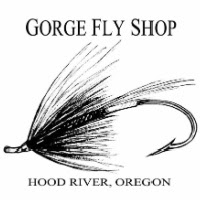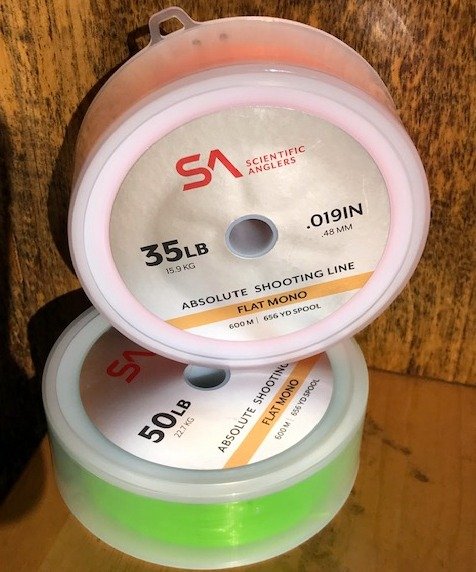 |
| Josh Jablow guides at The Lodge of the Palisades Creek in Irwin Idaho |
This is about friends more than it is about fishing. Every fisherman needs a good friend that is there to fish with during good and bad times. Fishermen grow and mature as anglers, and having someone to share that growth with allows them to become better anglers. This is just about the one fishing buddy that has had the most impact on me as an angler.
Josh and I have been fishing together for eight or nine years now. We were once roommates after my first year guiding for trout out in Idaho. I was just getting deep into steelheading before I moved out there, but I can say that Josh had more influence in my maturation as a steelheader than anyone else. Chasing steelhead started as more of a hobby that a lifestyle for me. I didn't think that I would miss it until it was unavailable.
I spent two entire guide seasons attempting to convince Josh to go steelheading “out west” with me. There are a lot of travel/fun options for a guide freshly finished with season, but for me, there was only one. In October of 2008, we made the trek across the great state of Idaho from one border to the other. Driving from one side of Idaho to the other doesn't seem like it should be that difficult or long, but it’s a solid 12+ hours from Driggs, ID (on the Wyoming border) to the Grande Ronde River (on the Washington border). It wouldn't be that bad if it wasn't for the giant wilderness that takes up most of central Idaho and requires a long detour around. Ironically, most of that drive across Idaho is done in Montana.
Josh first ventured out with me more out of curiosity than anything. He had heard of these mythical steelhead (unicorns), but didn’t know much else about them besides the usual; sea-run rainbows, hard to catch, etc… After spending nearly two years in the Rockies, my steelhead fever was overwhelming, like a junkie three days too long since his last fix. Trout are plenty of fun, and there are massive trout in the South Fork of the Snake, but nothing compares to the tug of a steelhead on a spey rod. Unfortunately, two years of trout fishing had really dulled my steelhead skills.
 |
| Grande Ronde Hook Up! |
That first trip we took to the Ronde involved way too much driving and lots of second-guessing everything from which water to fish to what flies to use. We ended up figuring out a few things and actually catching a few fish. I was ecstatic with our results. I mean, we caught steelhead, even if it was just a handful. Success in steelheading cannot be measured in the quantity of fish caught, but the quality of the time spent on the water with good friends, and the improvement of skills. This is a hard concept for a Colorado trout fisherman to wrap his head around. In trout fishing, the more fish the better; as if you catch 60 trout in a day, you had a good day of fishing.
We did have to resort to nymphing for steelhead on that first trip; as we doubted and second-guessed our abilities to catch them on the swing. It just seemed so unnatural for guys who had just spent 150 days staring at bobbers and hopper/dropper rigs to think a fish would come up and eat a fly that in our minds, was presented so poorly that it was swinging in the current. We did swing a couple of runs unsuccessfully for most of the first day, but caught a couple of fish nearly immediately after setting up a nymph rod (2x trout tippet and a #12 prince nymph on a 6wt, right out of the guide box).

During the next two years, we took several trips out to the Upper Salmon River near Challis, ID during the springtime had satisfied our “fix” of steelhead, although that can hardly be considered true steelheading; its more like shooting fish in a barrel with a fly rod. We had one session where we hooked something like 19 steelhead in an hour and a half, none of which took any line or went airborne. After swimming somewhere around 800 miles and spending up to nine months in the river, there isn’t a whole lot of spunk left in them. They tend to pod up and bite a lot more than their fresher kin. It’s a little sad to compare them to anything we have in Washington and Oregon. They can’t help it; they have to eat a little bit to give them the last bit of energy they need to spawn.
We made another trip out the Grande Ronde two years after our first Ronde excursion. This time, we took my new raft three days from Boggan’s to Heller’s Bar. We nymphed from the boat in between swinging runs, but along the way, we ran into Ed Ward and his crew. They gave us tons of advice and set us up with some good water to work, and casually suggested that we break those nymph rods and never use them again. That was precisely the moment that we gave up the nymph rod as a primary tool; and our mutual addiction to steelhead grew to that point where it became unstoppable. Like when an alcoholic admits that they are powerless to stop it, we harness that feeling and use it to make ourselves better.
 |
| Camp Fire Tying |
Later that day, we got into a run on the lower river that was stacked with fish. Josh and I each caught a couple of fish on a spey rod and dry lines. Neither of us had ever caught a fish on a scandi line and small, traditional flies. Josh had never caught one on a two-handed rod at all. We ended up camping on an uncomfortable gravel bar, sleeping on large rocks and mud, just because we did not want to leave that run. I knew at that moment that I would have to move closer to these fish.
A few years later and one more trip to the Ronde, I gave in to the power of the steelhead and moved out to Oregon. Josh stayed in Idaho, guiding trout in the summertime. He continues to come out every fall, working his way out from Idaho to California, fishing his way up the coast and then landing in the Gorge to hit the Deschutes, Klickitat and some other little spots around here before heading home (via the Clearwater and Grande Ronde of course).
Our adventure this year was probably the worst as far as fishing goes. Josh showed up right as the nasty weather hit in early November (really, the only nasty weather we’ve had this winter). He was there for the only skunking of the year on the Deschutes. We had east wind, dropping temps, dropping barometer and not a single grab with the river all to ourselves, even with the use of a jet boat to get to all the prime water.
 |
| Late Season Klickitat |
Then the snow came and we had a couple of the coldest days I have ever had on the Klickitat. Icy guides, frozen lines, deep snow and overall miserable conditions made life difficult for a few days there. We had planned on doing a four day float on the Deschutes while he was here, but deep snow and arctic cold put a stop to that. He ended up leaving a week earlier than planned and went back to the Tetons to catch some powder turns and get a jump on tying flies for the upcoming season.
Even if Josh and I don’t even get to fish together all that much any more, even if we don’t catch any fish when we do see each other, it’s always a great time. Steelheading is just as much about experiencing a day on the river with good friends as it is catching a fish. I would definitely not be where I am if it wasn't for him, and he might have never known the joys and frustrations of this lifestyle we call steelheading if I hadn't dragged him out to the Ronde all those years ago.
 |
| Josh Jablow |
** Winter 2015 update – Josh has just informed me that he will be coming out here in March for a couple of weeks of spring steelheading (can’t get enough). Expect a follow-up article on our adventures in early April.
Josh Jablow guides at The Lodge at Palisades Creek in Irwin, Idaho (www.tlapc.com) and can be found most of the year either at Grand Targhee Resort or fishing somewhere on the South Fork of the Snake River. If you want to have a great experience fishing for trout on one of the premier rivers of the west, book a trip with Josh.

Andrew Perrault
Gorge Fly Shop | Product Specialist
541.386.6977
"Fly Fish the World with Us"
 Andrew's Pizza, Hood River
Andrew's Pizza, Hood River


















































